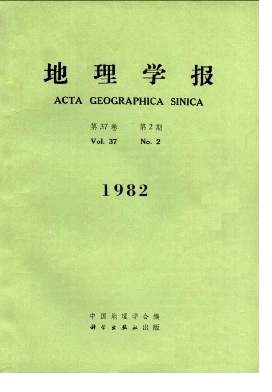Zhang Ying-jun, Mo Zhong-da
The article deals with the origin, evolution and the present condition of Orange Fall, a well known scenic spot along the Dabong River valley in Guizhou karst region.1. Geomorphologically, Orange Fall marks the boundary between two different types of landscape in central Guizhou Plateau, that of rounded hills, shallow depressions and broad karst valleys upstream of the fall, and that of gorges, sharp peaks and more rugged karst surfaces downstream. These indicate respectively two different physiograp-hical stages: the shapen stage (Mountain and Basin Stage) and the Xiagu Stage (Gorge Stage). During the later stage, as a result of the intermittent uplifts of Earth crust, several slope-breaks on the longitudinal profile of Dabong River had been formed. They are, from the upper reaches to the lower reaches successively, Orange-knickpoint, Hezuilai-knickpoint and Guanjiao-knickpoint (Fig. 3) indicating respectively the posi-tions reached by the headward erosion of Shiwangzhai, Banhuai and Daping substages. It should be point out that headward erosion of Shiwangzhai substage had only re-ached Luositan, not long after, the surface flow sank down into a ponor in the river channel. Then a ponor-fall belonging to the karst-erosional-knickpoint type had been formed which was the predecessor of Orange Fall of today.2. The authors show that in karst regions of central Guizhou plateau, after the surface flow sinks down to become an underground stream, the karst valley would undergo five phases of evolution : the embryonic phase, the incipient phase, the youth-ful phase, the mature phase and the old phase. Judged from the morphology of the valley downstream from Orange Fall to Natural-bridge, it exhibits the characteristics of youthful phase. However, on the Dabong River system, even within a comparatively small area, representatives of all the five phases of karst valley evolution could be found.3. There is a series of deep pools, partitioned respectively by rock steps, aligning on the river bed, just under the plunging water of the fall to several hundred meters downstream. They are the Rhinoceros pool, the plunging pool of the present water fall, beside, there are at least three other pools of former plunging water, already aban-doned after the recessions of the fall. It could be inferred that the site of the earliest ponor-fall should be, most probably, located at somewhere near Youyujing. Down stream from Youyujing, traces on the valley wall indicate serious collapses of former corridor deck. If the above inference is true, the Orange Fall would have been receeded for about 250 m since its formation.4. The reasons why Orange Fall are perfectly preserved at present are mainly lithological and structural:1) The rocks that compose the fall-face and valley wall are rather simple, mainlydolomitic limestones of lower Triassic age, which are of medium thickness and more re-sistant than the rock types further downstream of the fall.2) The present site of the fall is more favourable than its former site. Succes-sive recessions of the fall have already made it free from the fault zone and less re-sistant rocks.3) The rocks composing the present fall-wall dip slightly upstream.4) There are, deposited on the fall-wall thick beds of tufa which prevent plung-ing water from eroding the base rock on the one hand and filling up the fissures on the other hand, it possesses the effect to cement and strengthen the rocks on the other.5) The depth of the present plunging pool (15m) approximates the depth of security necessitated to dissipate the energy of the plunging water.5. The great thickness of tufa deposition on the fall-wall is quite a remarkable feature. Curtain-like tufa depositions hang down from the fall-crest to form cave-like space on the fall-wall, the well- known "Water-screen Cave, which is a kind of primary cave (Primarhohlen in Sedimenten).The authors found that in karst regions of Guizhou, tufa often deposits on the slope-breaks along the river valley where water fall or rapids occur. It is also wor-
